
Review Guidelines
Generally, a high-quality academic paper should have following elements: (1) originality; (2) innovation; (3) appropriate title; (4) high quality abstract, introduction, and discussion; (5) rigorous structure and argumentation (with strong logical coherence); (6) clear and reliable charts; (7) authoritative references; (8) readability (intelligible and convincing).
1. Purpose of peer review:
(1) Assist editors in deciding whether a paper is suitable for publication.
(2) Select the best and most suitable papers for publication in the journal.
(3) Check the reliability of data and methods.
(4) Evaluate the innovation and advantages of research work.
(5) Provide suggestions for the author's research work.
2. Information that editors are interested in:
(1) Will readers be interested in this manuscript? Is the manuscript readable?
(2) Has its topic/content been reported?
(3) Is the data scientific? is it truthful, reproducible, accurate, logical, and fair?
(4) Is the report complete? Is it a salami paper (splitting the same achievement into several papers)?
3. General requirements for reviewers:
(1) Reviewers should understand the basic information, publishing scope, and features of this journal.
(2) Reviewers are able to evaluate the strengths and weaknesses in experimental design and methods.
(3) Reviewers should accurately evaluate the author's analysis of research data and their understanding of research deficiencies.
(4) Reviewers should be able to evaluate the author's writing.
(5) Reviewers should pay attention to ethical misconduct in research.
(6) Reviewers should provide professional suggestions to revise the manuscripts.
(7) Reviewers should never disclose the manuscript content under reviewed.
(8) It is required to complete the review in a timely manner. If viewers are unable to complete the reviewe, they should notify the editorial office by phone or email in advance.
4 General principles for reviewing manuscripts:
4.1 Academic requirements
(1) The content of the manuscript must be truthful, objective, accurate, and have academic value, providing readers with guiding significance.
(2) The technology should be mature, the scientific research design rigorous, the methods accurate and reliable, the information complete, the data accurate, complete and statistical, and the conclusions grounded.
(3) The paper should have in-depth applicational value, scientific findings, or new insights compared to published papers. Plagiarism is prohibited.
(4) The manuscript should capture current issues of universal significance, reflect the new development of hospital pharmacy, and include the author's own views or evaluations.
4.2 Writing requirements
The following are a checking list of writing the paper.
(1) Introduction: Is the objective of the research clear? Is the review background fully reviewed? Have representative literatures been quoted? What problems should this research solve, and what are its advantages and innovations?
(2) Are there any mistakes in method, design, citation or experiment? whether the research steps are correct and reasonable? Whether the statistical methods are correct or not? Is the statistical part an independent paragraph in the paper?
(3) Result: Is the data consistent throughout the paper? Is there any mistake in tables (including design, quantity, and numbers), and is it in three-line style? Is it oversimplified or inconsistent to the text? Are the images and text redundant? Is the picture necessary? Is it typical? Is the quality good? Is the description appropriate?
(4) Discussion: Is it highly targeted (against the results but not literature review)? Is it appropriate if comparing the results with similar studies? Why different conclusions from other researches can be drawn? Is there any situation where the conclusion is excessive or untrue? Defects or deficiencies should not be covered up in the discussion, and it is important to identify which issues have not been answered and what work needs to be continued.
4.3 Principle of acceptance
Reviewers should measure the manuscript according to the academic and writing requirements mentioned above, and provide clear suggestions for selection and comments on the paper.
(1) the manuscripts shall be rejected for the following situations: content that clearly does not conform to the aim and scope of this journal; serious problems in the project design that cannot draw a logic conclusion; poor innovation (similar research has been reported previously); mistakes are found in the experiment; papers with immature methods, unreliable conclusions, and unfounded arguments.
(2) The manuscripts shall be accepted for the following situations: the firstly reported achievement; domestic new and mature achievements; papers with new or deeper practical experience and insights than before. Reviewers should clearly state it if a paper is highly innovative and outstanding that should be published as soon as possible.
(3) For the following situations, reviewers are requested to provide detailed and objective evaluations based on the paper’s significant points, practicality, instructiveness, etc., so that editors can make an objective judgment: preliminary research report; although similar reports were published, there are not many, and the paper have significance of verification; even though similar reports have been published, this paper provides a deeper understanding; the research has obtained negative results.
(4) The review should have quality control and encourage innovation at the same time.
5. Review Comments
5.1 Before the review comments, a summary of content of the manuscript can be provided, which helps editors better understand the manuscript. In the comments, the reviewers should provide a general opinion, which can be very straightforward, sharp, or personalized, but it should be supported by facts and logical analysis.
5.2 Reviewers should clearly express their attitude and opinions towards the manuscript, and the comments should be concise, accurate, comprehensive, and relevant. Try to avoid vague or indefinite words in review comments.
5.3 Manuscript format is not in the charge of reviewers. But reviewers can provide their own suggestions on grammar and writing of the paper.
5.4 Review result should be returned to the editorial office within 1-2 weeks. If reviewers are unable to complete the review on time, please contact the editorial office in a timely manner. If the submitted manuscript is not in line with reviewer’s research field or there are some difficulties in reviewing, the reviewers should recommend a suitable expert for further review or return the manuscript to the editorial office in a timely manner.